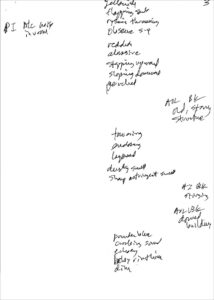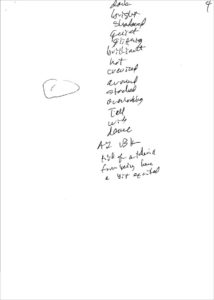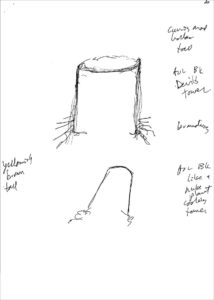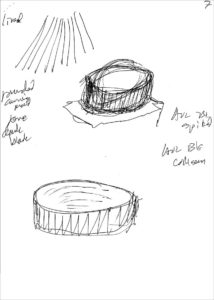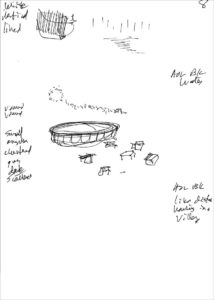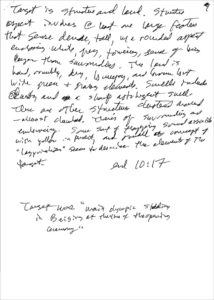The controlled remote viewing (CRV) example session shown below was done as a demonstration session by Paul H. Smith for one of his CRV Basic classes. (If you are unfamiliar with controlled remote viewing, find out more here.) Towards the end of a course, once the students have a good grasp of the CRV process, they get to choose a target for Paul to work fully blind. The point of the demonstration is not to “prove” to the students that remote viewing really works (they should have already proved that to themselves over the past several days in completing their own successful remote viewing sessions under blind conditions). Rather, Paul conducts these demos so the students can see for themselves the flow and execution of a well-practiced CRVer as he goes through the various stages of a CRV session. What follows is a basic level CRV session done up through Stage 3 (you can click on the images to see enlarged versions of the individual pages).
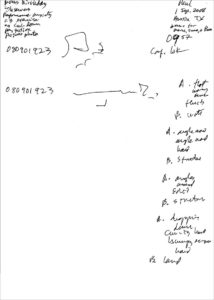 Stage 1
Stage 1
Stage 1 starts with the giving of the ‘coordinate’ (in this case, ‘080901923’). The viewer’s first task is to determine the major gestalt or gestalts of the target. In this case, water, land, and various structures are identified as being present.
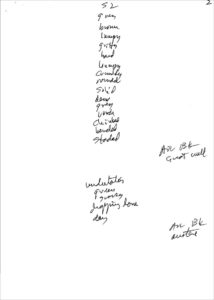 Stage 2
Stage 2
Stage 2 begins here. In this stage, the viewer perceives and records sensory impressions from the target, answering the question “What would I experience were I physically present at this place.”
Stage 2 continues. (Note analytical overlay–“AOL”–indicated in the right margin of the page. The “PI” in the upper left margin stands for “Personal Inclemency,” or non-remote viewing issues that the viewer finds distracting or bothersome. (In this case, it was a noisy air conditioner.)
Almost ready to move into Stage 3. This is indicated by the “AI BK” (for “aesthetic impact break”). That is noted towards the bottom of the written column. Aesthetic impact is a viewer’s subjective or emotional reaction to subconscious influx of large amounts of experiential data from the target.
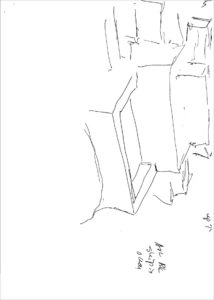 Stage3
Stage3
Stage 3 introduces sketching into the session. Here the viewer starts to experiment with various combinations of lines and shapes until he “feels right” about the combination.
Stage 3 continues. Note how the sketch is beginning to “morph” as the viewer gains a stronger concept of the target as the remote viewing “signal line” (as it is called) delivers more perceptual and experiential data to the viewer’s awareness.
As the viewer continues on with Stage 3, the sketches become more refined and additional data is perceived.
This is the final page of sketches for this session. Notice that the final sketch is an assemblage of various elements creating a sort of tableau that captures the relationship of different elements at the target.
Unless the viewer opts to continue on into Stage 4 or higher stages, Stage 3 usually concludes with a summary that compiles the impressions the viewers feels are most germane from the earlier pages of the session. This summary reads:
Target is [a] structure and land. [The] structure aspect involves at least one large feature that [seems] dense, tall, with a rounded aspect enclosing [a] white, grey, towering sense of being larger than [its] surroundings. The land is hard, crumbly, dry, bumpy and brown but with green and grassy elements. Smells include dusty and a sharp astringent smell. There are other structures clustered around–almost [undecipherable]. There’s [a sense] of surrounding and embracing. Some sort of flapping sound associated with yellow is present, and overall a concept of “labyrinthian” seems to describe the elements of the target.
Earlier in the session was the AOL of “colosseum” (p.7).
The target was the famous Olympic “Bird’s Nest” colisseum in Beijing, China, during the opening ceremonies of the 2008 Olympics (which may account for the squiggly shape above the final sketch in session–possibly representing fireworks). Here is a photo below for comparison:
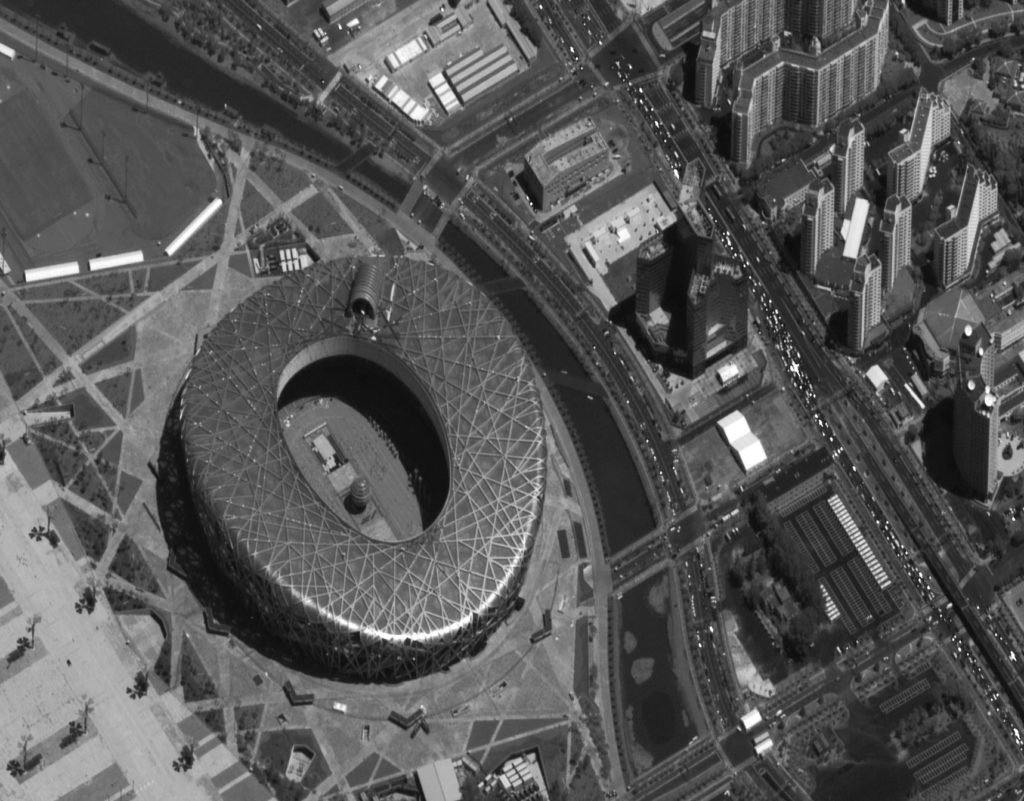
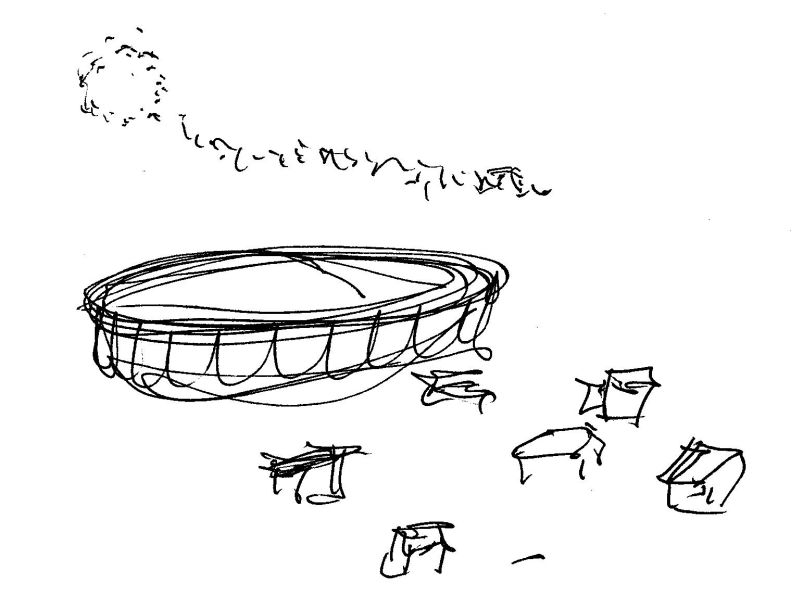
Other examples of controlled remote viewing sessions are available here.
